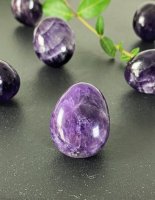Price for this fantastic cluster
Beautiful sparkling cluster sprinkled with Apophyllite points in multiple directions.
*A unique form of Apophyllite that is sought after by stone collectors
Size:
Height: 25mm
Length: 44mm
Width: 43mm
Weight: 69gr
Quality: Highest quality HK
Origin: India
Meaning & Properties
Apophyllite is a very spiritual crystal that increases your intention and helps you connect with your spirit guides. It facilitates astral travel, visions and insights, as well as feeding ideas from the higher realm that can be of help and guidance to you as a user. This stone supports you in your spiritual journey but also in the course of life, thereby reducing worry, stress and anxiety.
Apophyllite can contribute to order and create structure in your life which can also help you achieve inner peace, especially useful for those of you who experience chaos within or in everyday life. This crystal blocks and clears negativity within you such as energies, memories or emotions that do not benefit you. It is protective from external negative influences and instead brings positivity and joy into your life.
✦ Physically, Apophyllite is said to balance the body's functions and increase the user's memory. It can help treat allergies and release harmful stress, anxiety or fears.
✰ Tip! Apophyllite can be advantageously placed in a room where it can send out its energies into the surroundings that can fill an entire room. There it sends out peaceful feelings, love and harmony.
Chakra: Third eye & crown chakra

History & Facts
Apophyllite occurs naturally and most often in peaks like pyramids, but is also found in other forms. The most common Apophyllite is colourless/white, but is also found naturally in other colors such as green, yellow, red, blue and even black.
Apophyllite was first found in the 19th century according to documentation, but can now be found in several countries such as in India, Brazil, Australia, the Czech Republic and Greenland. The name of the crystal comes from the Greek word for "leaf" or "flake" and was named by René Just Haüy in 1806. The stone is named for its appearance when it is raised, which causes it to unfold and take on a leaf-like appearance.













